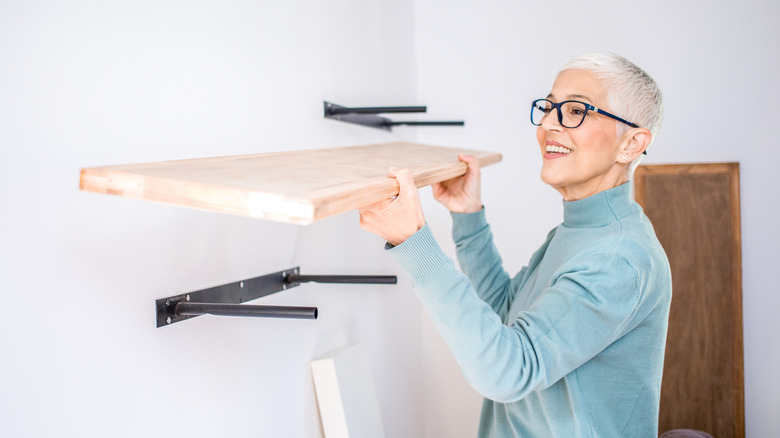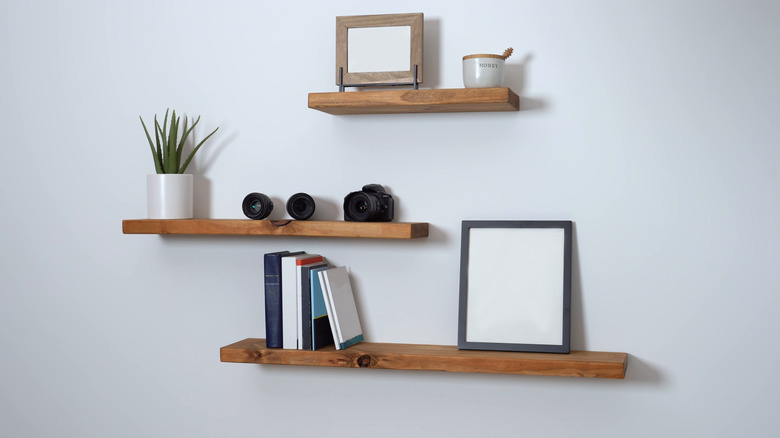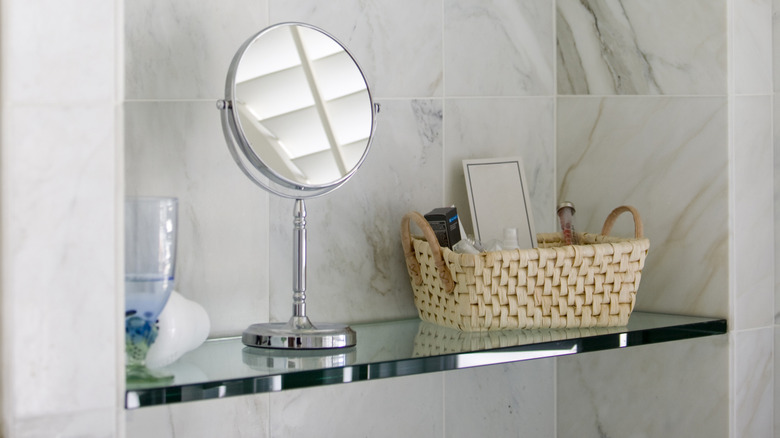How To Determine The Perfect Material For Your DIY Floating Shelf
Not many DIY home décor ideas are as versatile and easy to install as a simple floating shelf. Floating shelves can transform your space to fit your desired aesthetic, as you use them to store and display anything from kitchenware to books and toys. But this doesn't mean you can slap on just any material on the wall and call it a day. You can choose to make your floating shelf with metal, glass, plastic, or wood. The items your shelf will hold, its location, your aesthetic, and your budget are necessary considerations when determining the best material to use.
Aside from the base material for your shelf, the hardware you'll be using is equally important. You need to pick floating shelf brackets that combine durability, strength, and concealment to provide support and prevent sagging. At the same time, you shouldn't overlook the screws you use as their length is crucial for a secure installation.
Installing your shelf with the right tools is another necessity. Imagine going through all the work of getting the perfect materials for your DIY project, as you look forward to styling floating shelves to create a beautiful design, only for it to end up uneven or slanted. A good level can easily prevent this problem. You should also invest in a stud finder since installing the brackets into wall studs will improve their weight support and stability. It's best to get an electronic stud finder that can also detect wires and pipes to avoid any accidents.
Choosing from solid wood materials for your DIY shelf
Solid wood is a very popular material for floating shelves and could be perfect for you. You can decide if it is by comparing common wood types like walnut, maple, and pine with the metrics we stated earlier. Maple is strong enough to be used for bowling pins so be rest assured your DIY shelf will have terrific weight support. It is more affordable than most hardwood options. Although its light tone is suited for contemporary décor, it can take dark stains well for a more rustic aesthetic. Because of its hardiness, maple is best suited for shelves you'd keep frequently used items on, like spices or books.
Walnut shelving will have a deep dark tone that fits most home styles. Consider pairing with light-colored décor to create contrast. This wood type is a bit pricey, but worth it. Sensitive to light, walnut would lose its color with sun exposure so it might not be ideal for areas in your home with an abundance of natural light. It is also somewhat water-resistant and can be used in your kitchen or bathroom, but ensure to seal the wood.
Pine is a budget-friendly solid wood option. Although it generally has a light tone, reclaimed pine can provide a vintage charm to your space. While you can't compare the strength of pine to hardwoods, it has high load-bearing abilities and is relatively tougher than other softwoods. Pine shelves don't do well with moisture and will likely warp and bend over time if installed in wet areas like the bathroom.
Plastic, metal, or glass for your perfect DIY floating shelf
And if your ideal material isn't solid wood, it might be one of the less popular choices. Plastic floating shelves are a cost-saving option if you're on a tight budget. Plastic shelves are also moisture-resistant, so you could use them in your bathroom or laundry room. However, plastic generally doesn't have a very premium look, although transparent acrylic shelves can mimic glass. Although they don't look like it, shelves made from plastics like acrylic are stronger than glass and slightly more durable than wood, but not as strong as metal.
Metal shelves are a great choice, especially those made from stainless steel. Stainless steel is water-proof and doesn't rust like other metals, so it's a great option for shelves in areas with high humidity. These shelves might not fit easily into a traditional or farmhouse home design because they have a sleek, contemporary look. The cost of using this material for your floating shelf might be a bit high. However, metals have a high weight-bearing capacity and strength, which makes them long-lasting, so their initial cost will be worth it.
If you've pictured the perfect material for your shelf to be classy and fit into basically any aesthetic, then you might just be looking for glass. This versatility comes at a high cost, though, as glass shelves are typically more expensive than plastic and metal ones. This material has good load-bearing capabilities, but its fragility can cause it to break easily, so you have to be careful when placing heavy items on it.


